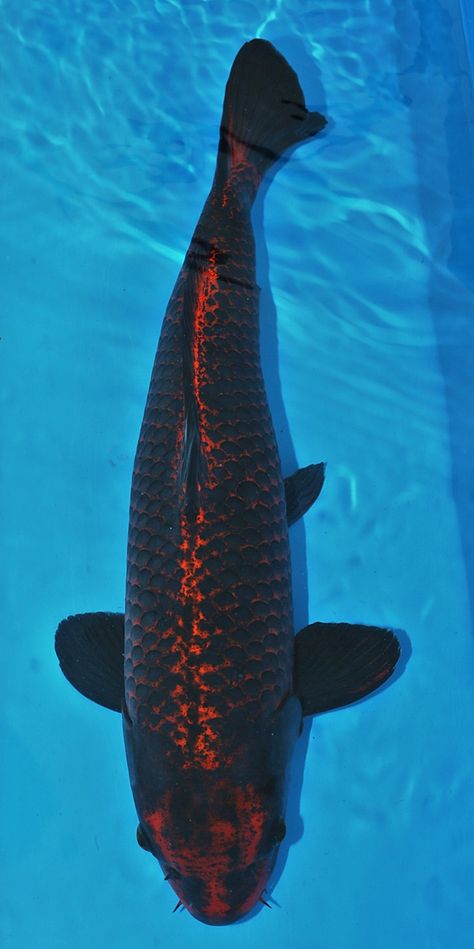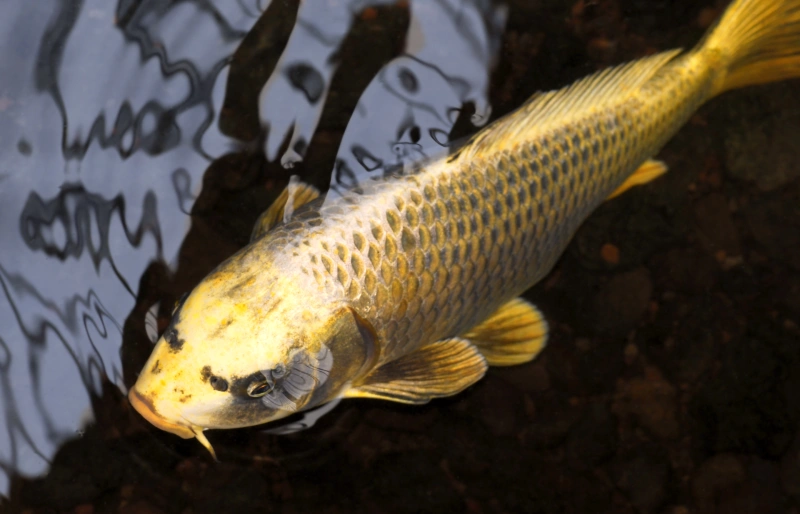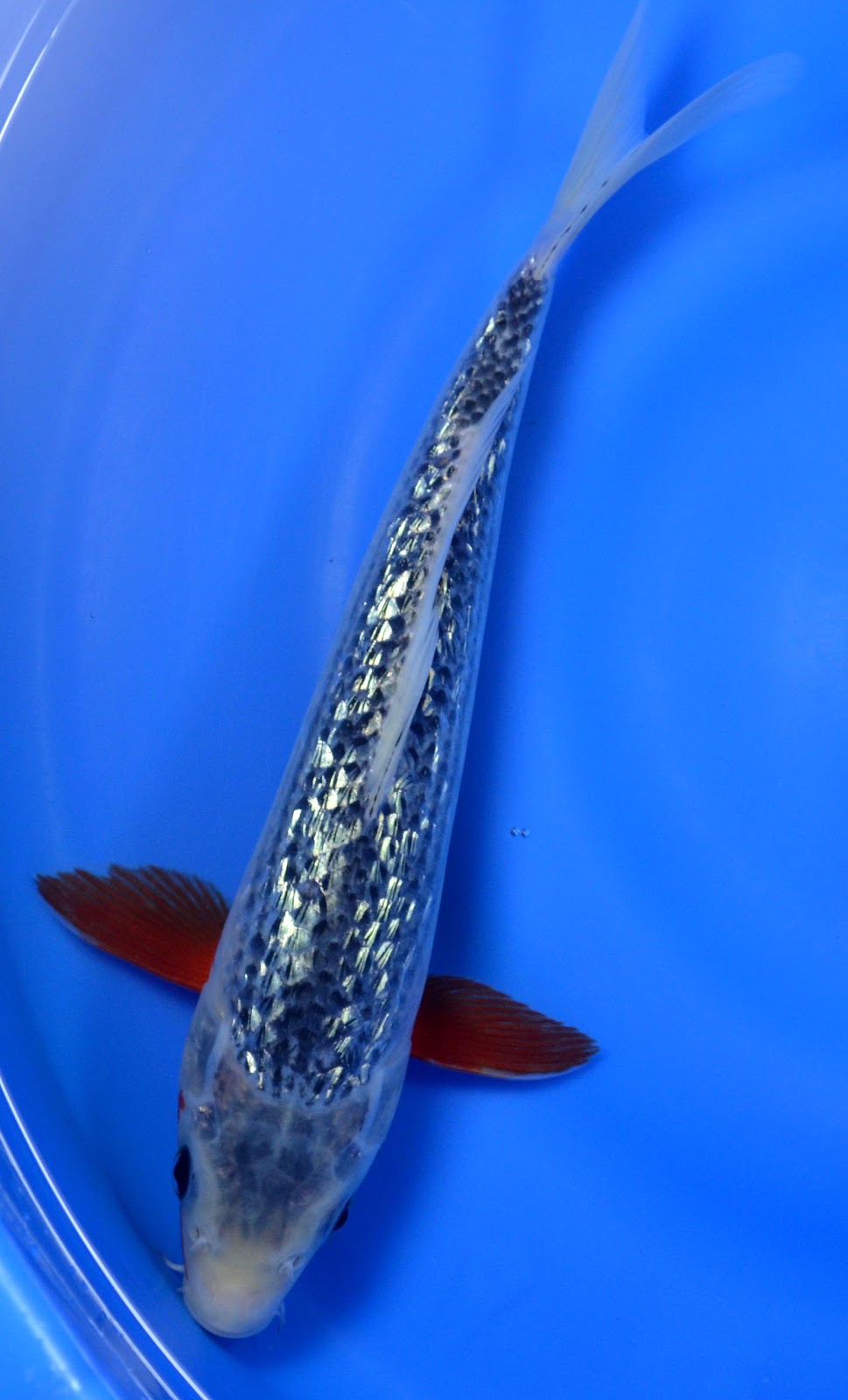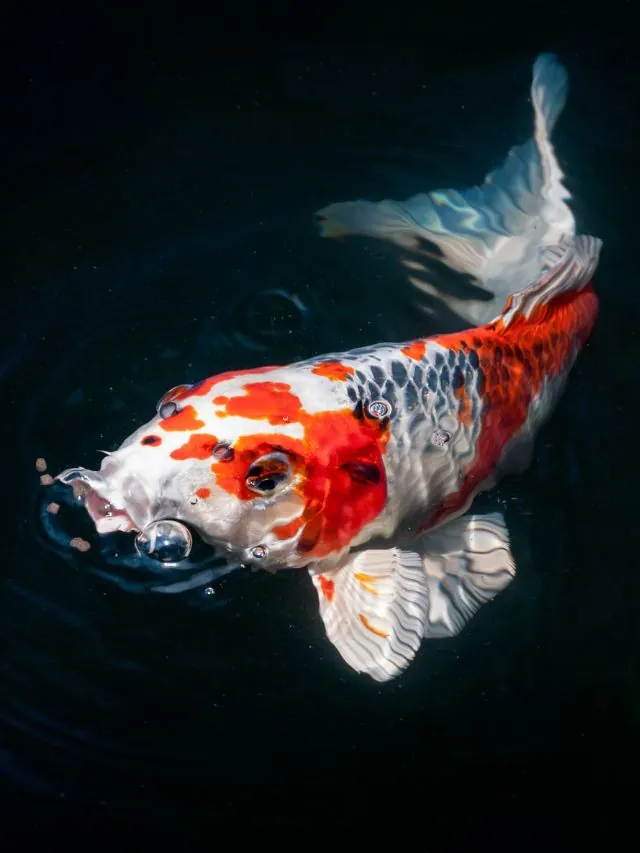Win a Free Trip to Japan!
Experience cherry blossoms and ancient temples
Drenched in vibrant colors and enchanting grace, koi fish are more than just ornamental pond dwellers—they embody profound cultural symbolism and meticulous care. If you’ve ever wondered about the various species or questioned how long can koi fish live, this ultimate guide will unravel the mysteries for you. From the allure of the mystic black koi fish to the sought-after gold koi fish and the tranquil beauty of blue koi fish, we delve into the enchanting world of these aquatic gems. Learn about the rich koi fish symbolization embedded in tradition, discover expert tips for maintaining your koi fish pond, and debunk common myths. Whether you’re an enthusiast or a novice, this comprehensive guide will equip you with vital insights and deepen your appreciation for these magnificent creatures.
Understanding Koi Fish: Species and Varieties
Understanding the diverse species and varieties of koi fish is essential for enthusiasts and newcomers alike. With their vibrant colors and unique patterns, these aquatic creatures have amazed people for centuries. Knowing the different types can help in making informed decisions when starting or expanding your own koi fish pond.
Koi fish come in a multitude of varieties, each with its own distinct appearance and characteristics. Let’s take a closer look at some popular types:
Black Koi Fish:
- Notable for their solid black color.
- Often associated with strength and perseverance.
- Prized for their rarity and striking appearance in a pond.
Gold Koi Fish:
- Known for their golden scales.
- Symbolizes wealth and prosperity.
- Requires regular maintenance to keep their colors vibrant.
Blue Koi Fish:
- Features mesmerizing blue hues.
- Represents calmness and serenity.
- Well-suited for creating a tranquil aquatic landscape.
Key Differences Among Popular Varieties
| Variety | Primary Color | Symbolization | Unique Feature |
|---|---|---|---|
| Black Koi Fish | Black | Strength and Perseverance | Rare and striking solid black color |
| Gold Koi Fish | Golden | Wealth and Prosperity | Requires maintenance for color vibrancy |
| Blue Koi Fish | Blue | Calmness and Serenity | Mesmerizing hues for a tranquil pond |
Understanding these varieties helps in appreciating the rich cultural symbolism these species represent. In Japan, koi fish symbolization is deeply intertwined with various aspects of life, from perseverance to prosperity. Whether you’re fascinated by the enigmatic black koi fish or the dazzling gold koi fish, learning about these different types enhances your overall experience and connection with these beautiful creatures.
When selecting koi fish for your pond, consider the species that align with your symbolic preferences and maintenance abilities. This knowledge will not only enrich your experience but also ensure that your koi fish pond thrives with elegance and harmony.
How Long Can Koi Fish Live: Lifespan and Factors
Understanding the longevity of koi fish can be fascinating and quite rewarding. These colorful, ornamental creatures have been known to captivate enthusiasts with their impressive lifespans. Let’s delve into how long these beautiful creatures can live and what factors influence their longevity.
Lifespan of Koi Fish
The lifespan of koi fish can vary significantly depending on several factors. Typically, they can live anywhere from 20 to 30 years under optimal conditions. However, there have been instances where these ornamental fish have lived much longer. Some have even celebrated century-long lifespans, particularly in their native Japan.
Factors Influencing Longevity
Several crucial factors contribute to the lifespan of koi fish. Below are some key elements to consider:
| Factor | Details |
|---|---|
| Environment | A well-maintained koi fish pond with clean, oxygenated water promotes better health. |
| Diet | A balanced and nutritious diet, rich in proteins and vitamins, bolsters longevity. |
| Genetics | Some breeds, like the gold koi fish and black koi fish, may have genetic predispositions affecting their lifespan. |
| Health Care | Regular health checks and prompt treatment of diseases can prevent early death. |
| Water Quality | Proper filtration and regular water changes are crucial for a healthy habitat. |
Tips for Maximizing Lifespan
- Maintain Clean Water: Regularly monitor the water quality to ensure it is free from harmful chemicals and pathogens.
- Provide a Balanced Diet: Feed your koi fish high-quality food that meets their nutritional needs.
- Prevent Overcrowding: Ensure your koi fish pond is not overcrowded, which can lead to stress and health issues.
- Regular Health Checks: Observe your koi fish closely for any signs of illness and consult a vet if necessary.
- Temperature Control: Maintain a stable temperature, as extreme fluctuations can be harmful.
Special Factors
Certain varieties like blue koi fish and specific genetic lines have been observed to live longer under ideal conditions. These varieties can offer both beauty and longevity to your koi fish pond.
In summary, understanding how long can koi fish live involves considering a myriad of factors ranging from environmental conditions to genetic makeup. By ensuring optimal living conditions and regular care, these magnificent creatures can grace your pond for many years, adding both beauty and tranquility to your outdoor space.
The Significance of Koi Fish Symbolization
When you think of koi fish symbolization, what comes to mind? These vibrant creatures are more than just beautiful additions to a garden pond; they carry deep cultural and spiritual meanings. Throughout history, especially in Asian cultures, these fish have been revered for their symbolic significance.
Cultural Symbolism
Koi fish symbolization is rich in tradition and steeped in mythology. In Japanese culture, they are emblematic of perseverance and strength. The famous legend of the koi swimming upstream and transforming into a dragon at the top of a waterfall epitomizes the themes of ambition and reaching one’s goals against all odds. This narrative aligns closely with the values of courage and determination.
Additionally, in Chinese culture, koi fish symbolization often connects to wealth and prosperity. The fish’s ability to swim against strong currents makes them a symbol of perseverance and a steady climb to success, wealth, and career advancements.
Symbolism by Color
The different varieties of koi also carry specific symbolic meanings:
- Black Koi Fish: Symbolize resilience and overcoming adversity.
- Gold Koi Fish: Often represent wealth, good fortune, and prosperity.
- Blue Koi Fish: Typically signify tranquility and peace.
Here’s a quick comparison table to summarize:
| Color | Symbolism |
|---|---|
| Black | Resilience, overcoming adversity |
| Gold | Wealth, prosperity, good fortune |
| Blue | Tranquility, peace |
Spiritual Symbolism
On a spiritual level, these aquatic wonders are considered bearers of good luck and spiritual benefits. Placing a koi fish pond in your garden isn’t just about aesthetics; it’s believed to attract positive energy and harmony. The peaceful nature of a beautiful blue koi fish or the prosperity associated with a gold koi fish can transform the ambiance of your space, bringing serenity and balance.
Whether for their cultural, spiritual, or aesthetic significance, investing in these magnificent fish goes beyond mere ownership. It’s a dive into a world rich with tradition, meaning, and beauty.
Care Tips for Your Koi Fish Pond
Ensuring the health and longevity of your koi fish pond requires more than just feeding and occasional cleaning. Here, we’ll dive into effective care tips for your koi fish pond to maintain a thriving aquatic environment.
Regular Maintenance and Cleaning
Proper maintenance and cleaning routines are essential for a well-balanced pond. Here’s what you should do:
- Frequency: Clean the pond filter bi-weekly.
- Debris Removal: Skim leaves and debris regularly.
- Water Changes: Replace 10-20% of the pond water monthly.
Water Quality Monitoring
Monitoring the water quality is vital for the well-being of your pond inhabitants:
| Aspect | Ideal Range |
|---|---|
| pH Level | 7.0 – 8.5 |
| Ammonia | 0 ppm (parts per million) |
| Nitrite | 0 ppm |
| Nitrate | Below 40 ppm |
| Temperature | 59°F – 77°F (15°C – 25°C) |
Ensure these parameters are within the optimal range to sustain how long koi fish can live.
Diet and Nutrition
Proper nutrition directly impacts the health of your aquatic friends:
- Diverse Diet: Include high-quality pellet food, vegetables, and occasional live food.
- Avoid Overfeeding: Only feed what they can consume in 5 minutes, twice daily.
- Seasonal Feeding: Reduce feeding in colder months as metabolism slows.
Planting and Landscaping
Incorporating plants not only enhances beauty but also plays a role in water filtration:
- Floating Plants: Introduce water lilies and lotus.
- Marginal Plants: Plant cattails and rushes around the edges.
- Submerged Plants: Add hornwort and anacharis for oxygenation.
Providing Shelter
Protect your aquatic friends by offering adequate shelter:
- Rocks and Caves: Include stones to create hiding spots.
- Aquatic Plants: Dense planting provides natural cover.
Seasonal Care
Lastly, adapt your care routine to the changing seasons:
- Winter: Utilize a pond heater to prevent freezing.
- Spring: Inspect and repair pond equipment.
- Summer: Ensure proper aeration to combat high temperatures.
- Autumn: Net the pond to prevent leaf accumulation.
By adhering to these tips, you can create an ideal environment for various types of black koi fish, gold koi fish, and blue koi fish, ensuring they thrive and display their natural beauty. Ensuring proper pond care directly impacts how long koi fish can live and enjoy a healthy life.
Black Koi Fish: Myths and Facts
Black koi fish are often surrounded by intrigue and mystery, making them a fascinating subject for enthusiasts and casual admirers alike. Whether you’re considering adding them to your koi fish pond or simply interested in their unique characteristics, understanding some key points can enrich your appreciation for these striking fish.
Myths
- Bad Luck Omens: A common myth is that black koi fish bring bad luck. This stems from cultural superstitions in some regions, but in reality, black koi can symbolize strength and resilience.
- Limited Growth: Another widespread misconception is that black koi do not grow as large as other varieties. In truth, their size can be comparable to other species, with the potential to reach notable lengths if cared for properly.
Facts
- Appearance: Black koi, also known as Karasu, exhibit rich black hues, sometimes with hints of blue or gold. Their striking contrast makes them stand out in ponds.
- Symbolism: In various cultures, including Japanese, black koi are revered for symbolizing life changes, overcoming adversity, and personal strength – an essential aspect of koi fish symbolization.
- Varieties: There are several varieties of black koi, such as Karasu and Matsukawabake, each with unique patterns and color intensities.
Nutritional and Environmental Needs
Maintaining the health of your black koi involves certain essential care practices:
- Diet: Like other koi, black koi thrive on a balanced diet that includes pellets, vegetables, and occasionally, protein sources.
- Water Quality: Ensuring clean, well-oxygenated water in your koi fish pond is crucial. Regular monitoring of water parameters can prevent diseases and promote longevity.
Lifespan
Curious about how long can koi fish live? With proper care, black koi can live for 20-35 years, with some instances of them surpassing 50 years, echoing the strong lifespans found across different koi varieties.
Comparative Table
| Aspect | Black Koi | Other Varieties |
|---|---|---|
| Symbolization | Strength, resilience | Varies by color |
| Growth Potential | Up to 3 feet | Similar or more |
| Lifespan | 20-35 years | 20-50 years |
| Dietary Needs | Balanced Diet | Similar |
| Preferred Habitat | Clean ponds | Similar |
Understanding the myths and facts about black koi fish can enhance your appreciation for these magnificent creatures, enriching the experience of maintaining a diverse and vibrant koi fish pond. Whether you are drawn to the classic beauty of gold koi fish or the enchanting allure of blue koi fish, each variety brings its own unique charm to the pond ecosystem.
Gold Koi Fish: Popular Choices and Care
When it comes to keeping gold koi fish, enthusiasts often cherish their vibrant colors and unique patterns. These aquatic gems are not only visually stunning but also hold significant meaning in Japanese culture. Due to these reasons, they’re a popular choice for both beginners and experienced hobbyists alike.
Characteristics that Make Gold Koi Fish Popular
Gold koi fish come in various shades of yellow and orange, often creating a shimmering effect in the water. These dazzling beauties are noticeable against the backdrop of any pond, making them a favorite for decorative aquatic settings. Some popular gold varieties include:
- Yamabuki Ogon: Known for their bright, metallic yellow color.
- Ki Matsuba: Characterized by their yellow scales with a distinct pinecone pattern.
- Ginrin Ogon: Exhibiting sparkling, reflective scales that captivate onlookers.
Care Tips for Gold Koi Fish
Caring for gold koi fish involves maintaining their health and vibrant appearance. Here are some essential steps:
- Water Quality: Good water quality is crucial. Test the water regularly for ammonia, nitrite, and pH levels.
- Feeding: Supply a balanced diet specific to koi, incorporating high-quality pellets and occasional treats like shrimp or vegetables.
- Temperature: Maintain the water temperature between 59°F (15°C) and 77°F (25°C). Use heaters in colder climates.
- Oxygenation: Ensure adequate oxygen levels through pond aeration systems or waterfalls.
- Filtration: Efficient filtration systems will help keep the pond clean and reduce the risk of diseases.
Disease Prevention
Gold koi fish, like other varieties, are susceptible to particular ailments, including bacterial and parasitic infections. Regularly observe them for any signs of abnormal behavior, sores, or discoloration. Initiate treatment at the first indication of illness to ensure a swift recovery.
Enhancing the Aesthetic of Your Pond
Integrating gold koi fish into your koi fish pond can elevate its visual appeal. Consider the following accents for a more captivating experience:
- A mix of koi colors: Add blue koi fish or black koi fish to contrast with the gold.
- Aquatic plants: Incorporate lilies and other flora for added texture and habitat diversity.
- Underwater lighting: Use lights to highlight the golden hues during evening hours.
By understanding the specific needs and characteristics of gold koi fish, you can create a thriving, beautiful pond environment that showcases the splendor of these magnificent creatures.
Exploring the Beauty of Blue Koi Fish
Blue koi fish are some of the most captivating and visually stunning residents of any koi fish pond. Their striking, sky-blue hues can vary greatly, providing a mesmerizing contrast to the more common gold koi fish and exotic black koi fish. This variety, specifically known as the “Asagi,” is cherished for its elegance and unique color palette.
Characteristics of Blue Koi Fish
To understand the allure of blue koi fish, it’s essential to explore their distinctive features and characteristics:
| Feature | Description |
|---|---|
| Color | Blue shades, ranging from light sky blue to deep indigo. |
| Pattern | Net-like reticulation, often with contrasting patches of red or orange on the underbelly. |
| Size | Can grow up to 3 feet, depending on various factors like care and environment. |
| Symbolization | Representing serenity, depth, and tranquility in different cultures. |
Why Choose Blue Koi Fish?
Blue koi fish add a unique visual element to any koi fish pond. Their serene colors evoke a sense of calm and tranquility. Moreover, their presence can symbolically enhance the aesthetic and emotional appeal of your garden space.
Key Advantages:
- Visual Appeal: The juxtaposition of blue with other vibrant koi species creates a dynamic and colorful pond environment.
- Symbolism: Often symbolizes peace and harmony, enhancing the spiritual aspects of a garden.
- Diversity: Adds variety to the pond, making it more engaging and beautiful.
Care Tips for Blue Koi Fish
Proper care for blue koi fish is crucial for maintaining their vibrant colors and ensuring their long, healthy lives.
- Water Quality: Maintain clean, well-oxygenated water to prevent any discoloration and promote well-being.
- Diet: Feed a balanced diet rich in nutrients and color-enhancing foods to keep their blue hues vivid.
- Environment: Ensure a spacious pond with plenty of areas for swimming and hiding.
By adhering to these care tips, you can ensure your blue koi fish remain healthy and vibrant, truly showcasing their natural beauty. Every koi fish pond benefits from the serene and unique presence of these remarkable creatures.
Frequently Asked Questions
What are Japanese Koi Fish?
Japanese Koi Fish, also known simply as Koi, are a group of ornamental fish that are bred from the common carp (Cyprinus carpio). Originating from Japan, these fish are renowned for their vibrant colors, patterns, and graceful forms. Koi fish are typically kept in outdoor ponds or water gardens and are appreciated not only for their beauty but also for their symbolic significance, often representing prosperity, good fortune, and longevity.
How long do Japanese Koi Fish live?
Japanese Koi Fish are known for their impressive lifespan, often living between 25 to 35 years in well-maintained conditions. In some exceptional cases, Koi have been documented to live for over 200 years! Factors that contribute to their long lifespan include proper nutrition, clean water, adequate space, and protection from predators and diseases.
What do Japanese Koi Fish eat?
Koi have a varied diet that can include commercial Koi pellets, vegetables, fruits, and protein sources such as insects and small crustaceans. It’s essential to provide a balanced diet to maintain their vibrant colors and overall health. Overfeeding should be avoided as it can lead to water quality issues and health problems. Feeding schedules often shift with the seasons; during warmer months, Koi are more active and eat more, whereas in colder months, their metabolism slows down considerably.
How big do Japanese Koi Fish get?
The size of Japanese Koi Fish can vary significantly based on genetics, environment, and nutrition. On average, Koi fish can grow to be between 24 to 36 inches (60 to 90 cm) in length. In optimal conditions, some Koi can even reach sizes up to 3 feet (approximately 1 meter). Providing a spacious pond with ample depth and a nutritious diet plays a crucial role in their growth potential.



